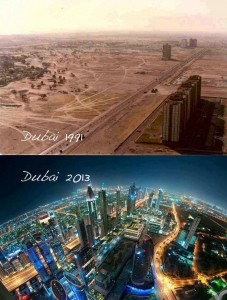Space travel, a concept which was once believed to be a dream for the common man has now, finally, turned into reality. Now, not only astronauts, but anyone and everyone can travel into space and experience the marvelous phenomena there. And this has been made possible by the Virgin Galactic, a company within Sir Richard Branson’s Virgin group which plans to provide Space trips to the people who aspire to see life above the sky.
MotherShip
The White Knight Two is a special aeroplane that functions as the mother-ship and launch-platform for the spacecraft SpaceShip Two. It gives the Spacecraft more initial speed and altitude than if it were launched from the ground. The design of the mothership is very simple and practical yet modern. It has a large fixed-wing aircraft, with two hulls, linked together by a central wing. Here’s a video that demonstrates the launching :http://www.youtube.com/watch?v=Vh7HOu5-o10
SpaceShip Two
SpaceShip Two uses all the same basic technology, carbon composite construction and design as SpaceShipOne. However, it is around twice as large as that vehicle and will carry six passengers and two pilots. It is 60ft long with a 90 diameter cabin which is similar in size to a Falcon 900 executive jet albeit with no floor dissecting the cabin allowing maximum room for the astronauts to float in zero gravity. Each passenger gets the same seating position with two large windows: one side window and one overhead, so that, if you don’t want to float free in space, and you’d rather just remain in your seat, you still get a great chance to see the view. No more squabbling over for whosoever, since everyone has amazing seats! My intended major being Mechanical Engineering, I take deep interest in discussing about the mechanical and technical aspects of things. This spaceship is an air- launched glider powered by a hybrid rocket motor. It requires aerodynamic forces to provide itself stability and control, which, it has only when it is in the atmosphere. It follows a purely ballistic trajectory once it’s in space.

The passenger seating arrangement in the Spaceship. The passenger gets a great view with one window on the side and one above his/ her head.
Spaceport America
A successful business requires an apt workplace and Virgin Galactic will just have that at Spaceport America in New Mexico. Virgin Galactic will establish its headquarters and operate its space flights from Spaceport America, the world’s first purpose built commercial spaceport which is now under construction. Spaceport America will provide cutting edge facilities and a wonderful location for fledgling astronauts to realize their dreams. The facility has been designed by world renowned, UK based Foster + Partners who won an international competition to build the first private spaceport in the world. The shape of the building and its interior design seeks to capture the drama and mystery of space flight itself. It’ll provide a feel of space and most of the showcasings inside will be of black color.Local materials and regional construction techniques are being used to build the Spaceport, which will in turn be both sustainable and sensitive to the surroundings.
This is, indeed, a very big leap in each and every sphere, be it design, sustainable methods and most importantly, it showcases the great progress of mankind over such a short period of time. This is what Virgin Galactic has in mind and plans to do it in sometime: http://www.youtube.com/watch?v=1Tc_vlQSKpM#t=28
Virgin Galactic is doing whatever it can to promise a thrilling experience, So have you booked your ticket to space?
Reference List:
1. Freudenrich, C. How Virgin Galactic Works. Retrieved from http://science.howstuffworks.com/virgin-galactic.htm
2. Kluger, J. (2013). Virgin Galactic: The Hour is Nigh For Tourists in Space. Retrieved from http://science.time.com/2013/09/25/virgin-galactic-the-hour-is-nigh-for-tourists-in-space/
3. Daileda, C. (2013). Richard Branson: Commercial Space Travel is Coming in 2014. Retrieved from http://mashable.com/2013/09/25/richard-branson-space/


















